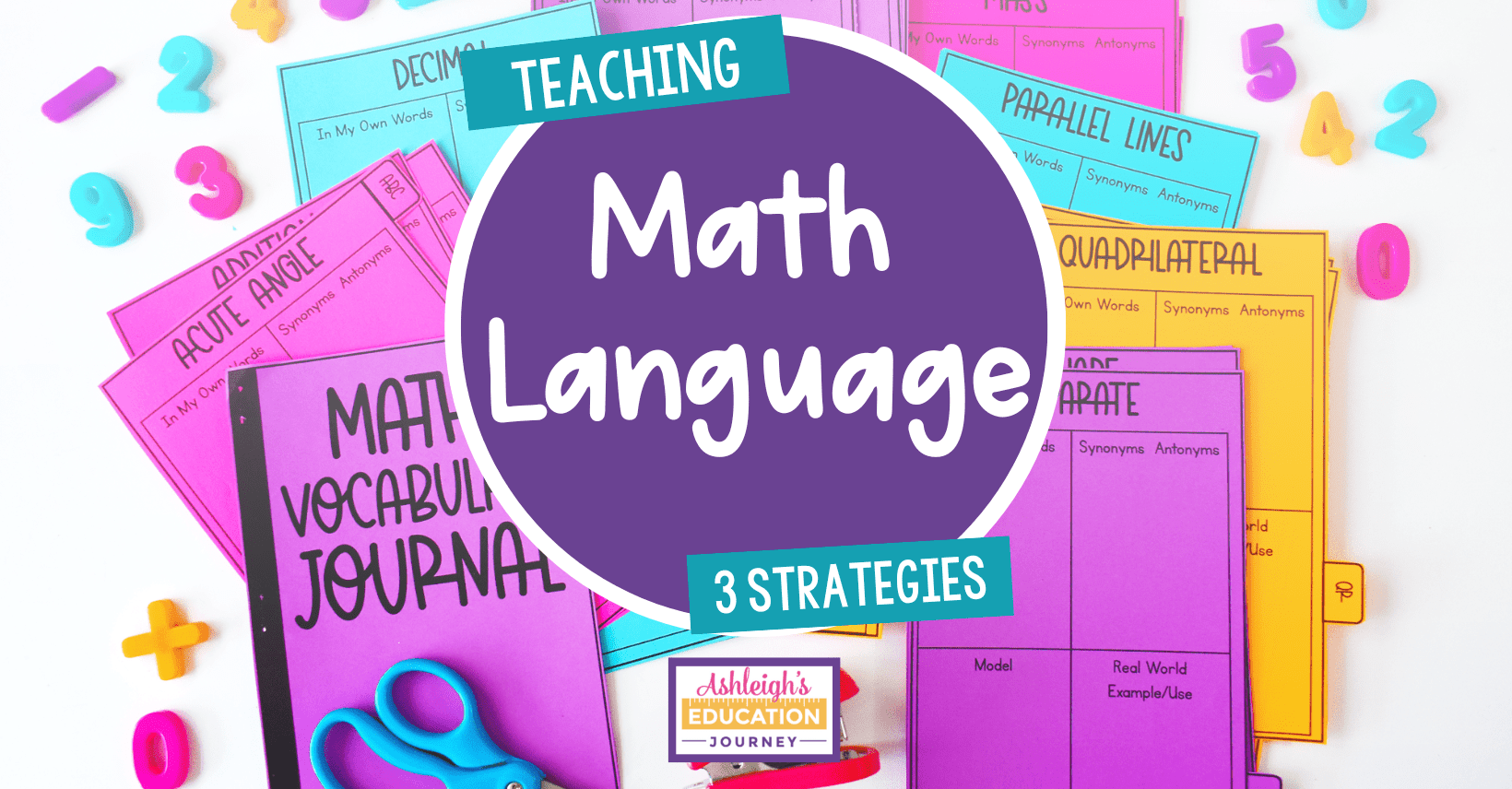
This post continues the series on teaching students who struggle in math and focuses on the importance of math vocabulary. For most teachers this is an obvious part of the process, but I’d be remiss to leave it out.
Math vocabulary is academic language that includes vocabulary and language structures when thinking about, talking about, and writing about math. It is important that we teach clear and concise language to help students communicate their understanding of math concepts.
Routinely Teach Math Vocabulary
When we introduce new math vocabulary we should provide context and meaning to the words. The definitions should be student-friendly and incorporate familiar words. When possible, try to link new vocabulary to a variety of examples and representations.
I have students create a Math Vocabulary Journal (which you can download for free). Each entry includes the vocabulary word, space for a student-friendly definition, and examples. The other spaces vary and include categories such as: characteristics, models, synonyms, and antonyms. This graphic organizer helps visually and symbolically depict the word’s meaning.
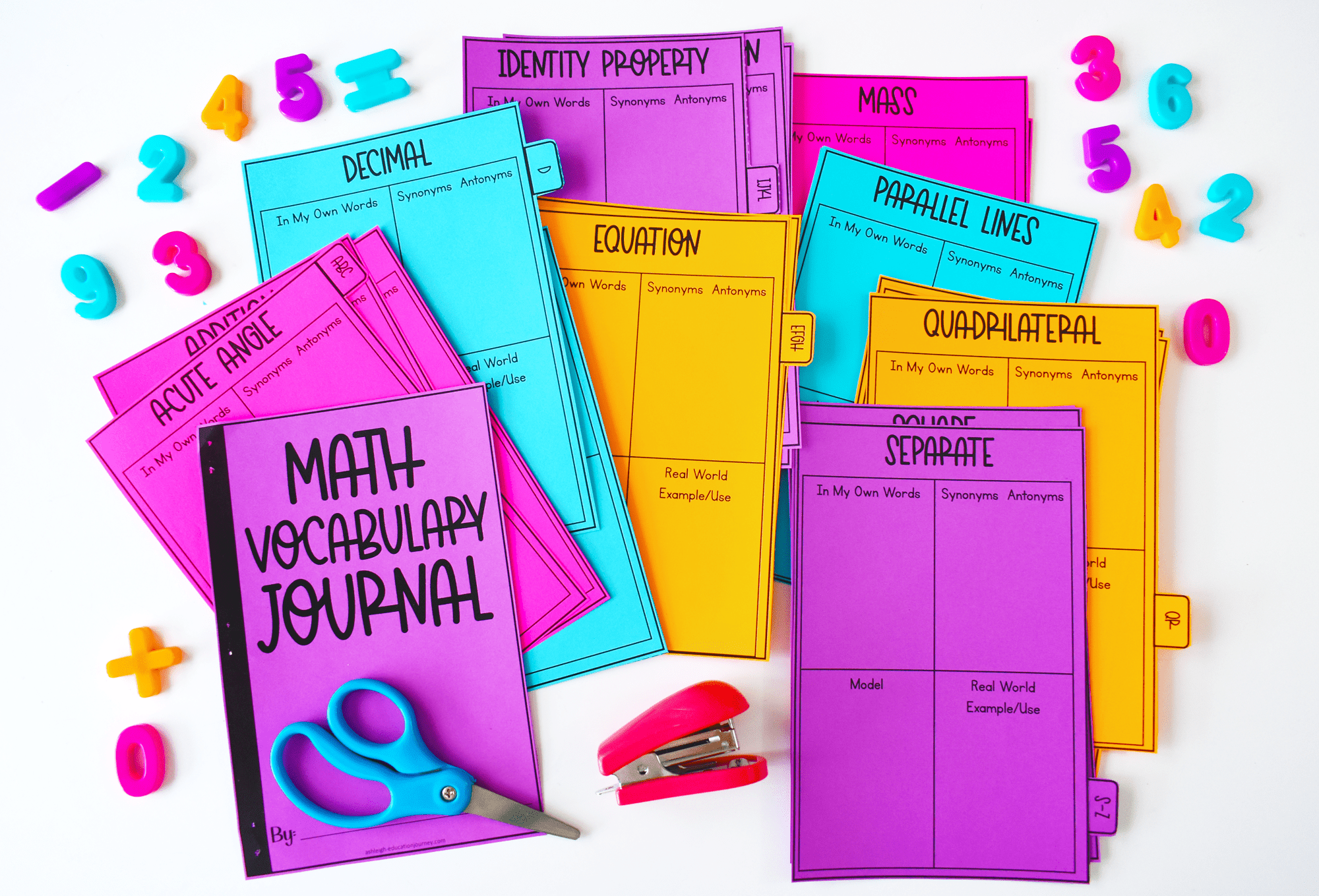
Another strategy is to create a list of math terms that is shared among grade levels. A shared list helps ensure that teachers use consistent vocabulary and language in all grade levels and settings. For example, when teaching subtraction, rather than introducing the process as “borrowing’ introduce it as “regrouping”. When working with fractions, teachers should know whether to use the term “simplify” or “reduce”.
In my remediation units, there is always a specific focus on math vocabulary. I introduce one word a day to prevent confusion and overwhelming students.
Math Vocabulary Support
The use of math vocabulary and explaining concepts does not come easy for most children. Students will likely need extensive modeling and support to explain their thinking using mathematical language. One way we can offer students support is through sentence starters.
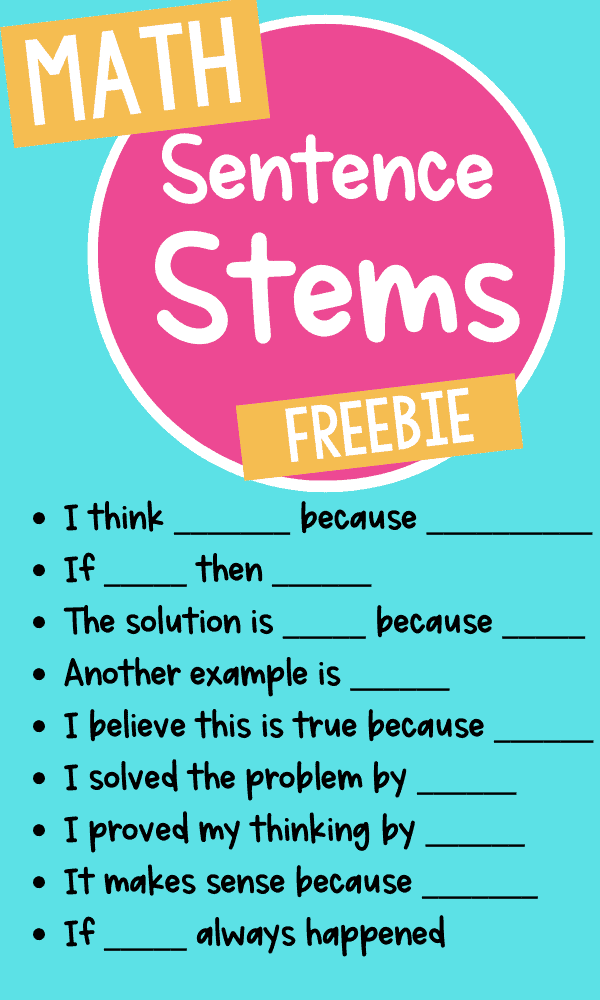
When students discuss math concepts do not articulate their thoughts clearly or precisely, it is helpful to restate the students’ explanations using correct language when students.
Written Explanations
When having students write about math, I like providing a color coding system that students can use as a checklist. For example, students highlight or underline their number sentences in red and circle their models with purple. This helps students monitor their own responses. Not all tasks or questions lend themselves to teach type of response, so students may only use some of the colors. You can download both versions the checklist here.
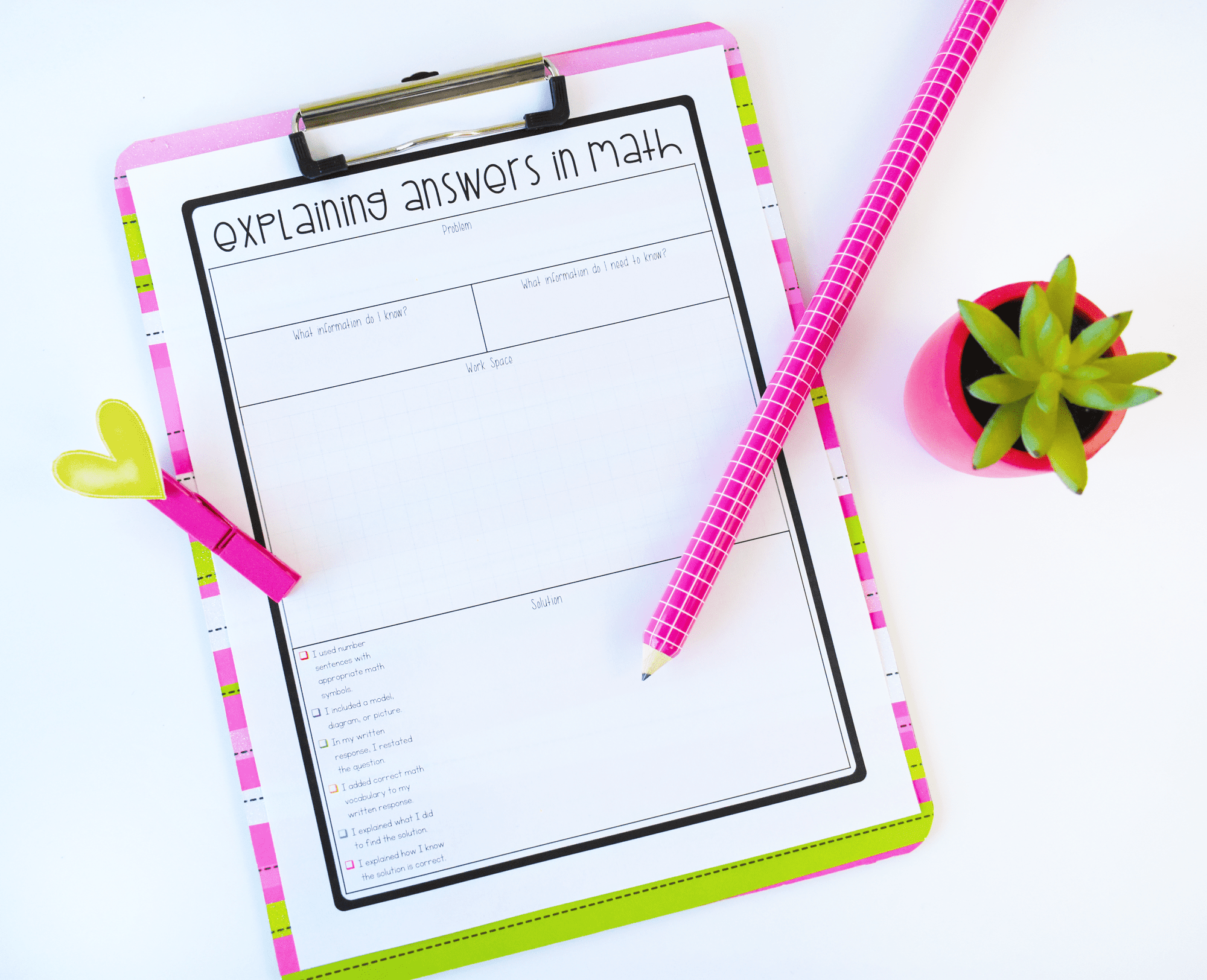
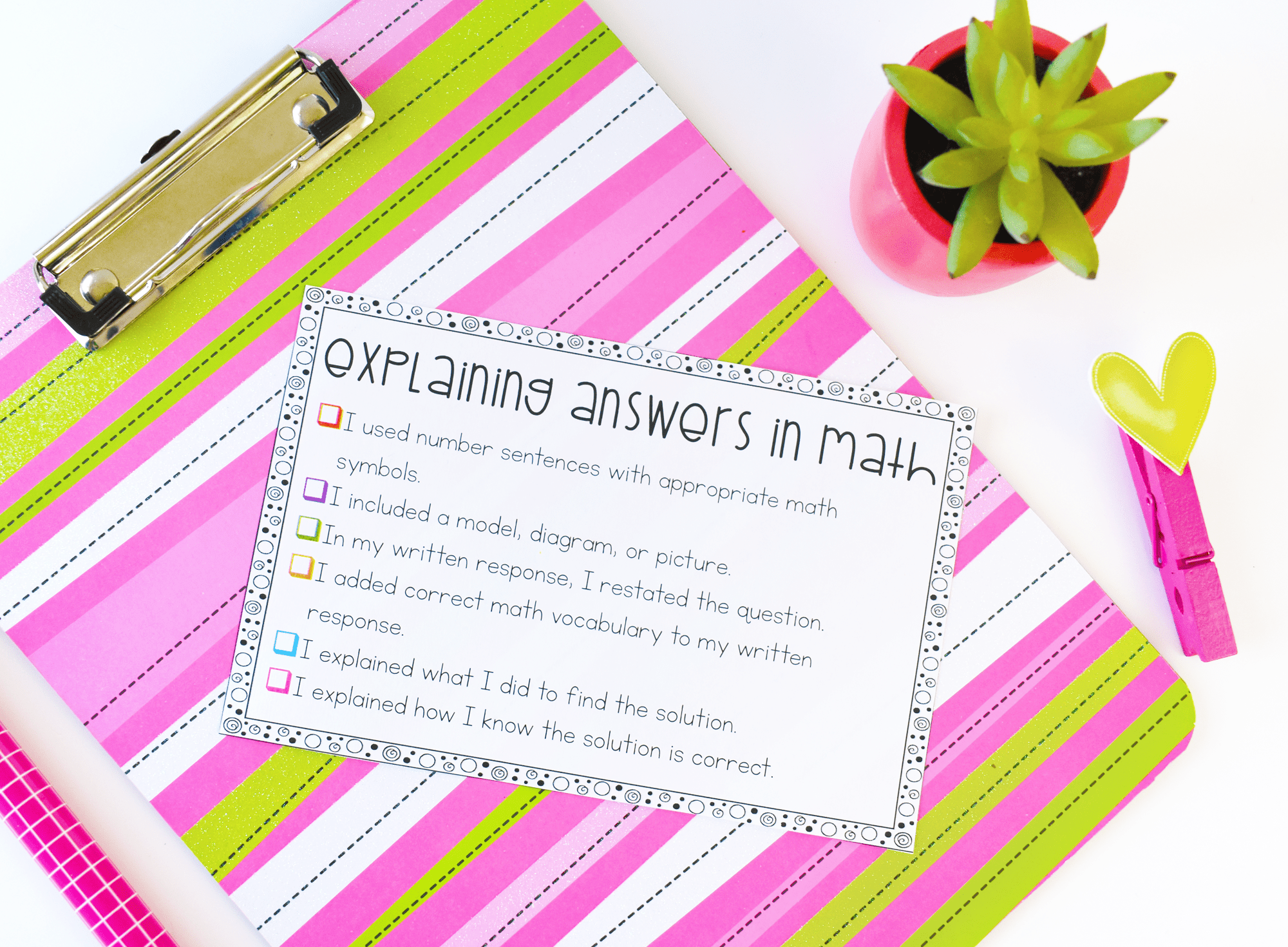
We can remind students to include mathematical language in their conversations and explanations by displaying mathematical vocabulary. This can be done through individual word walls, notebooks, or classroom word walls.
Math Vocabulary – Clear, Concise, and Correct
We should be careful to use clear, concise, and correct math vocabulary during our instruction to reinforce students’ understanding of math terms. Math vocabulary is often difficult for children because many terms have meanings in general English and meanings specific to mathematics. Another challenge with math vocabulary is when we over simplify terms, because this will later create roadblocks for students in later grades.
Examples
- When teaching comparisons we should use accurate language, such as greater than or less than. Students should recognize that numbers are not bigger but greater or more.
- With calculations based on the four operations, we must be mindful of the language used to explain the symbol. For example, the plus sign means to “add,” but it does not mean “plussing.”
- Another symbol that causes difficulty is the equal sign. We should try to use language such as the same as or a balance, to help children understand the equal sign as a balance between two sides of an equation. It is important to avoid indicating the equal sign means “write your answer” or “compute.”
- When teaching fractions, we should use the terms numerator and denominator. We can use “top number” and “bottom number” to describe of the position of the numerator and denominator. This is important because fractions are not always presented with a fraction bar.
- The language used to read a decimal should support the relationship between decimals and fractions. For example, we should reading 3.2 as “three and two tenths” rather than “three point two”.
- Geometry vocabulary often presents a significant challenge for students. Many of these issues relate to preciseness of the vocabulary. For example, a square is a rectangle, but a rectangle is not always a square.
Hopefully, you’ve found these math vocabulary strategies useful for all students. You can find more blog posts for supporting students with difficulty in math using the links below.
- Foundations of Math Instruction
- When Your Students Don’t Get It
- Systematic Instruction
- Representations
- Word Problems
- Math Facts


